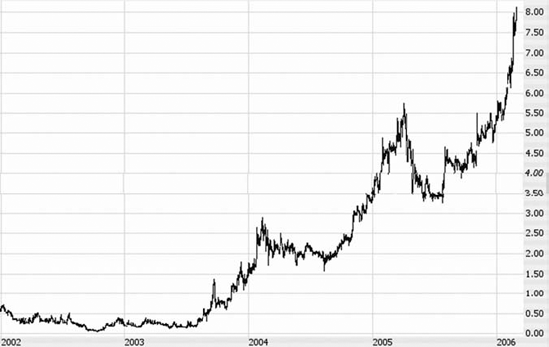Chapter 2. Fundamentals of Chart Creation
In this chapter, we get down to the business of actual charting. You are going to learn about different chart types, how to size and arrange charts, and the differences of charting different kinds of financial instruments, among many other topics.
The first task is to actually get to the charting system itself, which is ProphetCharts. To get to ProphetCharts, you'll need three things:
A computer with high-speed Internet access.
A browser equipped with Java (such as a recent version of Firefox, Chrome, Safari, or Internet Explorer).
Access to ProphetCharts via the Investools Investor Toolbox (
www.investools.com) or the thinkorswim brokerage platform (www.thinkorswim.com).
For the purposes of this book, we assume that you are starting from scratch; that is, you have no saved chart styles, study sets, watch lists, or any other settings. There is no harm if you do have some settings already, but we approach this from the vantage point of having a clean slate.
ARITHMETIC VERSUS LOGARITHMIC
One of the most important properties of a chart is whether it is arithmetically scaled or logarithmically scaled. Now this may seem like a very esoteric, arcane subject, but it's really quite important. Let's see what this is all about with an example.

Figure 2.1. The arithmetic scale spaces all prices equally, which can create a distorted view for the technical analyst. ...
Get Chart Your Way to Profits: The Online Trader's Guide to Technical Analysis with ProphetCharts, Second Edition now with the O’Reilly learning platform.
O’Reilly members experience books, live events, courses curated by job role, and more from O’Reilly and nearly 200 top publishers.

